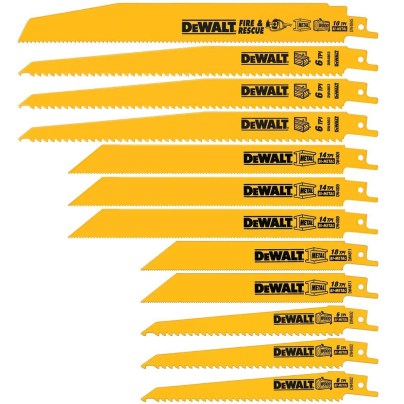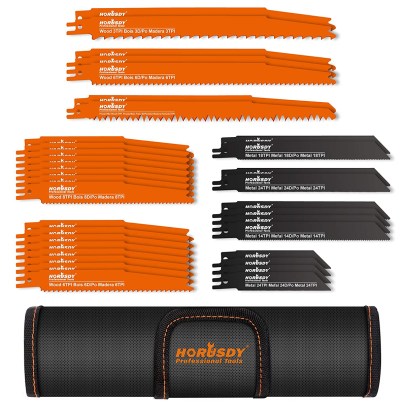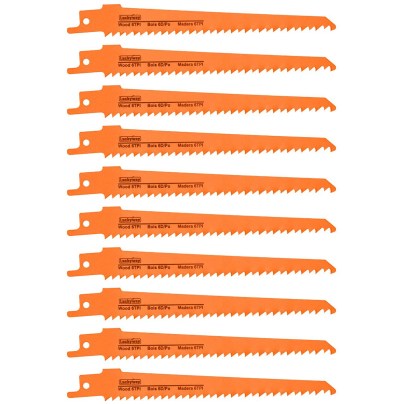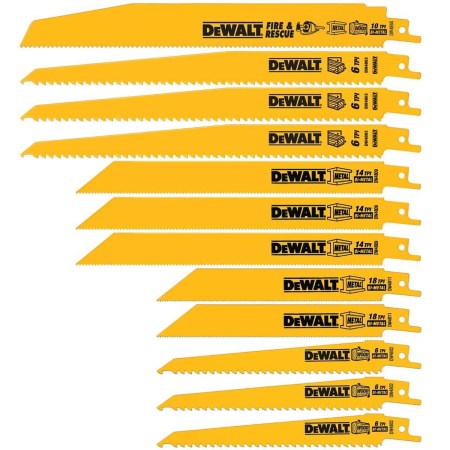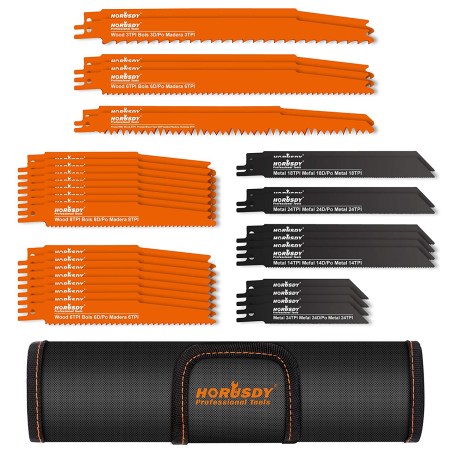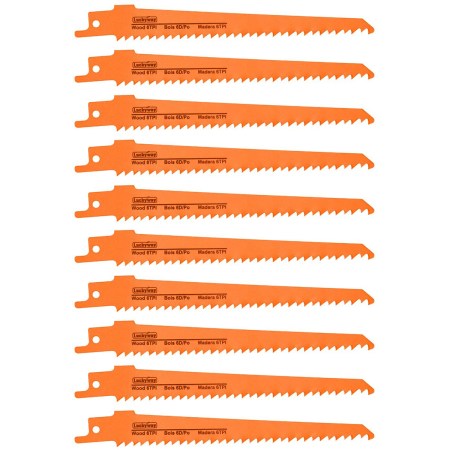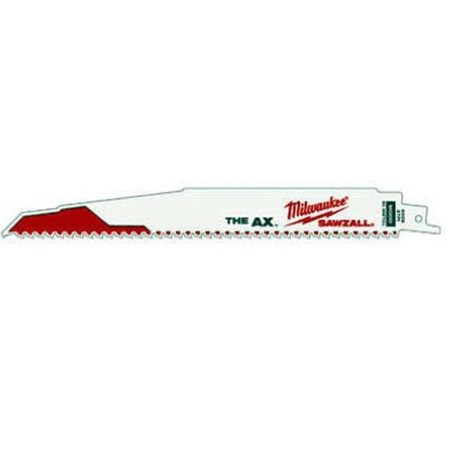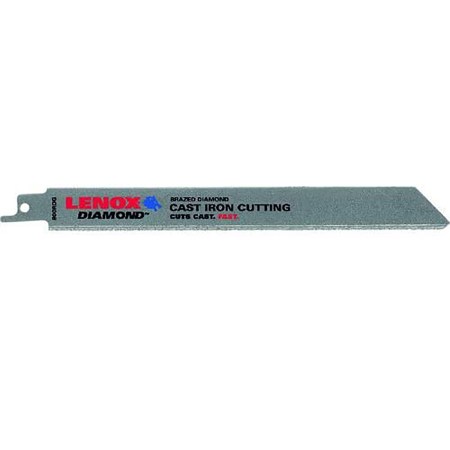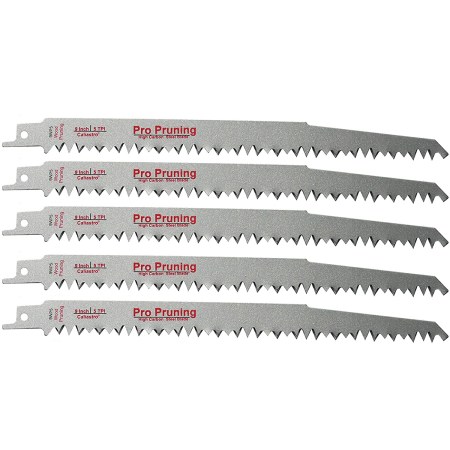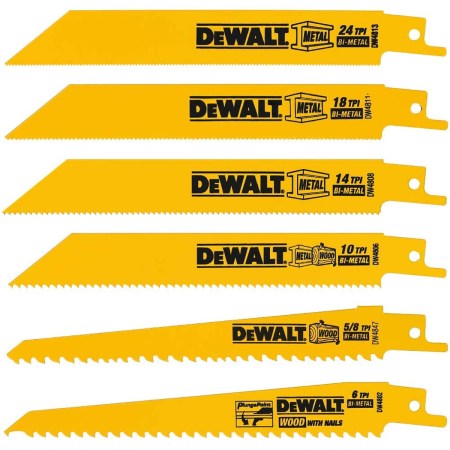We may earn revenue from the products available on this page and participate in affiliate programs. Learn More ›
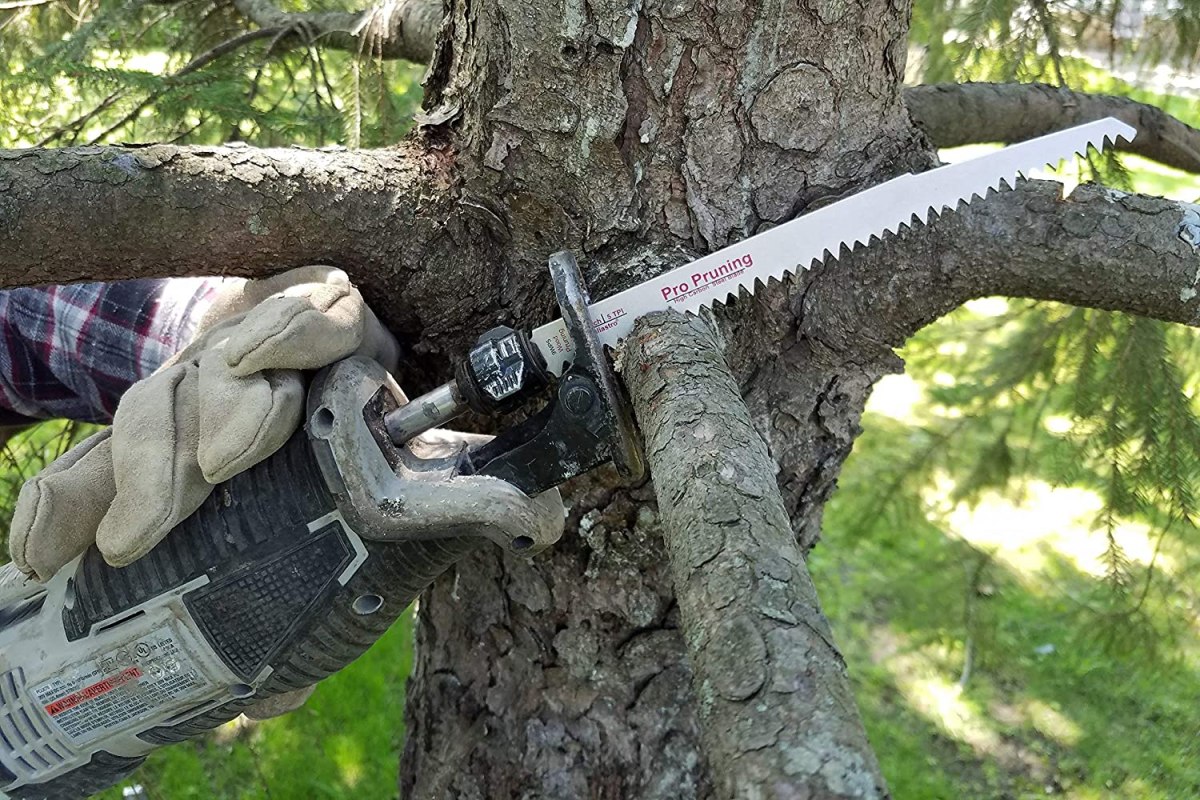
With the correct blade, a reciprocating saw or saber saw (commonly known as a Sawzall) can make short work of cutting through wood, plastic, metal, and even concrete blocks and concrete.
To meet the demands of this range of materials, manufacturers offer many blade options. Although expanded choice means better value and improved performance, choosing the right reciprocating saw can be challenging as a result. Getting it wrong not only wastes time and money, but it also can put safety at risk.
This article can help you avoid those mistakes and also help you determine which is the best reciprocating saw for almost any task. In addition to detailing the beneficial features of different types of blades, some of the best options in a variety of categories follow.
- BEST OVERALL: DEWALT Reciprocating Saw Blades, Bi-Metal Set
- BEST BANG FOR THE BUCK: HORUSDY 34-Piece Metal Reciprocating Saw Blade Set
- BEST WOOD: Luckyway 10-Piece 6 Inch Reciprocating Saw Blades Set
- BEST MULTIPURPOSE: Milwaukee The Ax 9-Inch Reciprocating Saw Blades
- BEST FOR CAST IRON: LENOX Tools Reciprocating Saw Blade, Diamond Grit
- BEST FOR YARD WORK: Caliastro Wood Pruning Saw Blades for Reciprocating
- ALSO CONSIDER: DEWALT Reciprocating Saw Blades, Metal/Wood Cutting
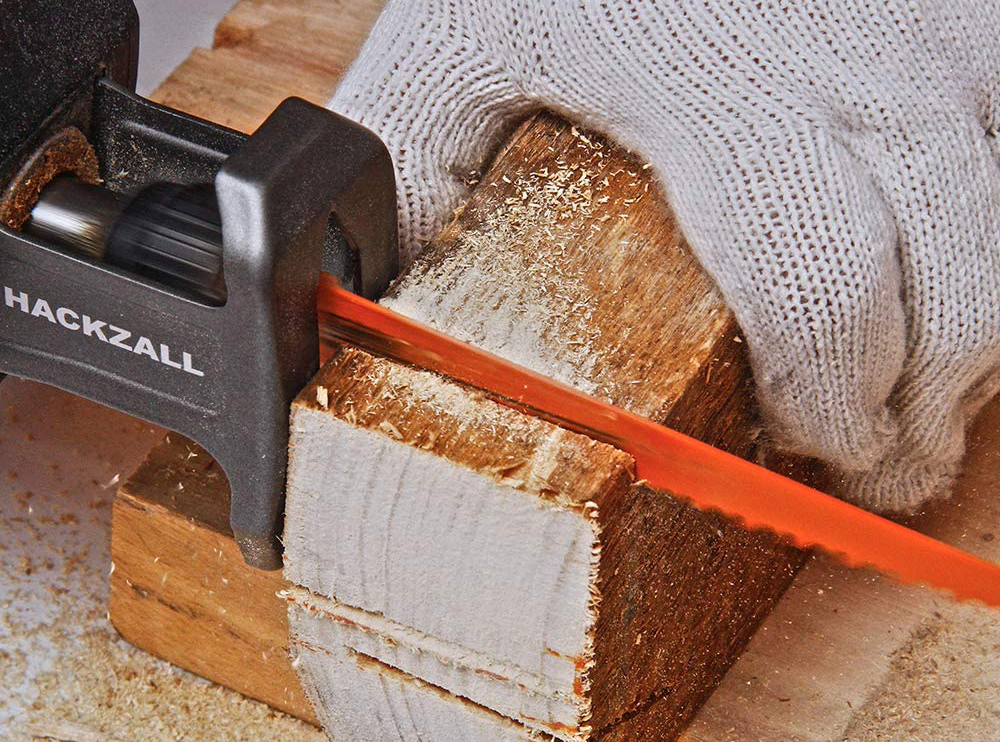
What to Consider When Choosing the Best Reciprocating Blades
A number of technical factors impact both performance and durability when choosing any saw blade, including the blade’s material, teeth per inch, length and shape, and thickness.
Material
- High carbon steel (HCS) is probably the most common material for Sawzall blades. It’s relatively inexpensive, flexible, and moderately durable. These blades can cut wood, plastic, and many composites. Don’t confuse it with high speed steel (HSS), which is harder, stays sharp longer, is rather brittle, and seldom used by itself for reciprocating saw blades.
- Bi-metal blades combine the best of HCS and HSS. Although a little more expensive, they’re very durable with improved edge retention. They cut faster for a longer time.
- Carbide (actually tungsten carbide) is an extremely hard compound utilized to further improve cutting performance. Carbide-tipped blades, generally used to cut metal, can last 20 times longer than bi-metal blades. Carbide-grit blades have no teeth, but the blade edge is coated with coarse grit. They’re particularly good at cutting fiber cement, concrete, and fiberglass.
- Diamond-coated reciprocating saw blades offer the best cutting edge. Similar in construction to carbide-grit blades, they can saw through extremely hard materials like cast iron with relative ease. They also are the most expensive type of reciprocating saw blade.
Teeth Per Inch (TPI)
The number of teeth per inch (TPI) on a reciprocating saw blade says a lot about its capabilities. Low TPI generally means a coarse finish to the cut, but a high TPI means it’s smoother. However, also consider the material that’s being sawed.
For instance, green wood has a soft, fibrous structure, so if using a saw with high TPI, the teeth may jam up with pulp and won’t cut. Gaps between the teeth (called gullets) help clear the waste caused by the soft fibers. As a result, a pruning blade might have as low as 4 or 5 TPI.
On the other end of the scale, hard metals are best cut with blades with many small teeth set close together, or high TPI. Reciprocating saw blades for steel can be from 14 to 24 TPI.
The best reciprocating saws for any given task are those that combine the right blade material with the correct TPI. While the manufacturer’s guidance is usually fairly accurate, sometimes it’s a question of trial and error. For beginners, purchasing a pack of reciprocating saw blades in assorted sizes is a good idea, because it’s a low-cost way to try a variety of TPI blades.
Length and Shape
Most reciprocating saw blades are between 6 and 12 inches long. Shorter blades are convenient when working in confined spaces, while longer blades are useful when sawing wide boards or tree limbs.
When choosing blade length, also consider safety. A reciprocating saw performs a back-and-forth sawing action. If the blade is too short, it can jump out of the cut on the pull stroke and crash into the workpiece as it goes forward again. Given a reciprocating saw’s speed, this can not only break the blade but also cause a nasty operator injury. Experts generally recommend using a blade that’s 3 inches longer than the thickness of the workpiece.
Wood-cutting reciprocating saw blades are usually slender and tapered toward the tip. Blades for harder materials, on the other hand, particularly those with carbide grit or diamond coated, are deeper, with a back that runs parallel to the teeth to provide more support and reduce deflection.
Thickness
Thicker blades usually have relatively high TPI. These stiffer blades are more suitable for heavy-duty work such as demolition or auto body work. Additionally, they’re often more durable and vibrate less, which can reduce hand fatigue.
However, a thick blade also means a wider “kerf,” the width of the cut, and thus how much material the blade can remove. For a fine cut, use a thinner blade.
Our Top Picks
Our top picks represent some of the best reciprocating saw blades currently available, and many of the brand names probably are familiar. They’re divided into different categories to provide easy reference.
Best Overall
DEWALT Reciprocating Saw Blades, Bi-Metal Set
See ItThis DEWALT set represents an economical general-purpose collection for trade and DIY use. It includes 12 bi-metal blades, some of which are duplicates. The five styles vary from a 6-inch, 6 TPI wood-cutting blade up to an aggressive 9-inch, 10 TPI “Fire & Rescue” demolition blade.
The blades are made in the United States and come in a smart case that’s compatible with DEWALT’s power tool kit box.
Best Bang for the Buck
HORUSDY 34-Piece Metal Reciprocating Saw Blade Set
See ItThis 34-piece HORUSDY set features good quality, general-purpose reciprocating saw blades. It not only offers nine different blade styles for wood, plastics, man-made boards, drywall, and metals, but it also includes a couple of tree-pruning blades. The blades range from 5 TPI to 24 TPI, giving solutions for most common sawing tasks.
The kit’s orange blades, which are designed for cutting softer materials, are made of high- carbon steel. The black blades, a bi-material with high speed steel teeth, cut metal. The entire collection comes in a durable canvas pouch for easy organization and convenient carrying.
Best Wood
Luckyway 10-Piece 6 Inch Reciprocating Saw Blades Set
See ItThese Luckyway reciprocating saw blades can cut softwood, plywood, laminates, MDF, and plastic pipe. Made of high carbon steel, they’re 6 inches long with 6 TPI. While it’s not the strongest material, it’s an economical choice.
At 0.05-inch thick, the blades leave a thin kerf. They also can perform light pruning, though the length limits the branch size. A 9-inch alternative is available. If cutting hardwoods, a higher TPI blade probably would be more useful.
Best Multipurpose
Milwaukee The Ax 9-Inch Reciprocating Saw Blades
See ItThese hard-wearing bi-metal blades from Milwaukee are often called demolition blades. Designed for jobs in which old nails or screws might be hidden in wood or to separate an aluminum frame and timber surround, this blade can cut through both types of materials. A standard reciprocating saw blade might break or quickly go blunt performing this kind of work.
These U.S.-made blades are 9 inches long with 5 TPI and sold in packs of five. To limit flex, they’re thicker than standard and heat treated to increase durability and stay sharp longer.
Best for Cast Iron
LENOX Tools Reciprocating Saw Blade, Diamond Grit
See ItCast iron is one of the most difficult materials to saw. While carbide-tipped blades can do the job, nothing competes with a diamond-coated blade, such as this 8-inch blade from Lenox, for speed and precision.
Rather than high carbon steel, Lenox uses a harder chrome-steel alloy, which allows for a thinner blade and narrower kerf without sacrificing strength. With a diamond coating, the reciprocating saw blade can cut even the hardest materials. It produces minimal vibration and leaves a smooth finish. While primarily designed for cast iron, the Lenox blade also can cut tile, brick, and even marble.
Best for Yard Work
Caliastro Wood Pruning Saw Blades for Reciprocating
See ItThese blades from Caliastro can handle all kinds of yard work to help turn a reciprocating saw into an easy-to-use chainsaw alternative. They can prune and remove damaged limbs. At 9 inches long, the blades can tackle branches up to 5 inches in diameter. The irregular tooth shape is designed to rip through fibrous material, while the open gullet allows for rapid clearance of soft sawdust and shavings. They are effective on dry and seasoned wood and can saw through roots.
Caliastro reciprocating saw blades, which are made from high carbon steel, are sold in packs of five. A plastic storage case is included.
Also Consider
DEWALT Reciprocating Saw Blades, Metal/Wood Cutting
See ItDEWALT’s six blades have a bi-metal composition for strength and durability. Each blade is 6 inches long. They vary from a 6 TPI demolition blade up to a 24 TPI version to cut metal. They can tackle almost all the materials that a DIY user is likely to encounter, including wood, plastic, composites, drywall, aluminum, and sheet steel. A case is included.
FAQs About Reciprocating Saw Blades
While this guide provides an overview of the technical aspects of reciprocating saw blades and lists some excellent choices, it’s a surprisingly complex subject. As a result, many different questions may arise when trying to choose the best reciprocating saw blades. Keep reading to find the answers to some of the questions that crop up regularly.
Q. How do I choose a reciprocating saw blade?
As discussed, the key issues are blade material, TPI, and blade size. The correct reciprocating saw blade is the one that offers the best combination of these elements for the workpiece. Manufacturers’ guidance is usually accurate, but remember it may be better to have several different types of reciprocating saw blade than try to use one not designed for the job.
Q. How do you sharpen reciprocating saw blades?
In most cases, use the same technique as when sharpening a handsaw blade. However, with high TPI blades, in particular, the task is fiddly and time-consuming. Carbide and diamond blades cannot be sharpened.
Q. How do you change reciprocating saw blades?
One way to change a reciprocating saw blade is to use an Allen screw to remove the blade, slot in a new one, and retighten the screw. For a blade with a sprung collar, simply slide the collar open with your thumb to change the blade.
Q. How do you store reciprocating saw blades?
Storing blades in the packaging they came in helps protect the cutting edge. Or, use a plastic box or simply wrap them in thick cardboard and tape.
Q. How long do reciprocating saw blades last?
So much depends on the quality of the blade and the work it’s used on that it’s difficult to determine, but a blade can last from a few hours to several weeks. Most users keep a spare blade handy.
